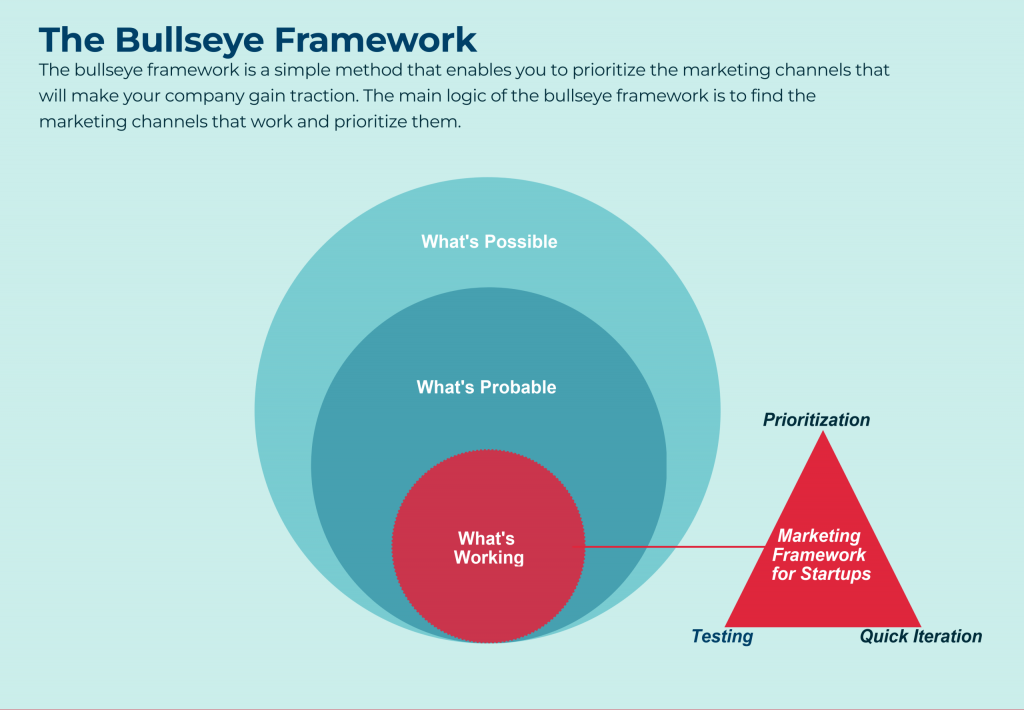Bullseye framework: An oversimplified version of how we are approaching International GTM
“Most businesses actually get zero distribution channels to work. Poor distribution—not product—is the number one cause of failure.” – Peter Thiel
Bullseye Framework is a popular framework used by startups to help identify and prioritize their marketing channels. Over the last year and a half at Mudrex, we have successfully run the bullseye framework twice to get marketing channels like Influencer Marketing and Brand Partnerships to work together and acquired over 700k+ users. We are now doing this again from scratch to acquire users in International markets.
The framework has three stages: brainstorming, prioritization, and testing.

Brainstorming Q3
In this stage, the goal is to generate a list of potential marketing channels that Mudrex could use to acquire customers. This involves thinking creatively and considering both traditional and non-traditional marketing methods. The basic idea is to generate an exhaustive list of potential channels.
Prioritization Q3
In this stage, the goal is to evaluate each potential marketing channel and determine which are the most promising. This requires looking at each channel through three lenses: feasibility, potential, and cost. Feasibility means whether or not we have the resources and capabilities to execute the channel, Potential means whether or not the channel has the potential to acquire a significant number of customers, and Cost means how much it will cost to execute the channel.
Based on this evaluation, we narrowed down the list to a small number of high-potential marketing channels and rigorously tested them. For instance, we extensively tested Influencer Marketing, Brand marketing, and Communities at this stage and decided to drop Influencer Marketing because of the ROI
Testing Q4 2022, Q1 2023
Current stage, the goal is to test high-potential marketing channels and gather data on their effectiveness. The growth team sets specific goals and metrics for each channel and runs experiments to see which channels perform the best. Based on the results of the testing, the team then adjusts the marketing strategy and focuses on the channels that are driving the most customer acquisition.
Having done this for close to 6 months, we are in the second cycle of testing and as of today we are actively building and experimenting with channels such as Communities in Turkey and Italy, Brand Partnerships in Spain and Italy, and just getting started with Affiliate Marketing for all markets.
While the Bullseye framework does not entirely capture all our efforts or the scope of work in the international GTM, it certainly is a good map to understand how the Growth team at Mudrex evaluates, prioritizes and decides which channels to develop. I hope this gives you more insight into how the growth team operates. In case you have more questions or are curious to learn more about Growth Frameworks feel free to reach out to me!





